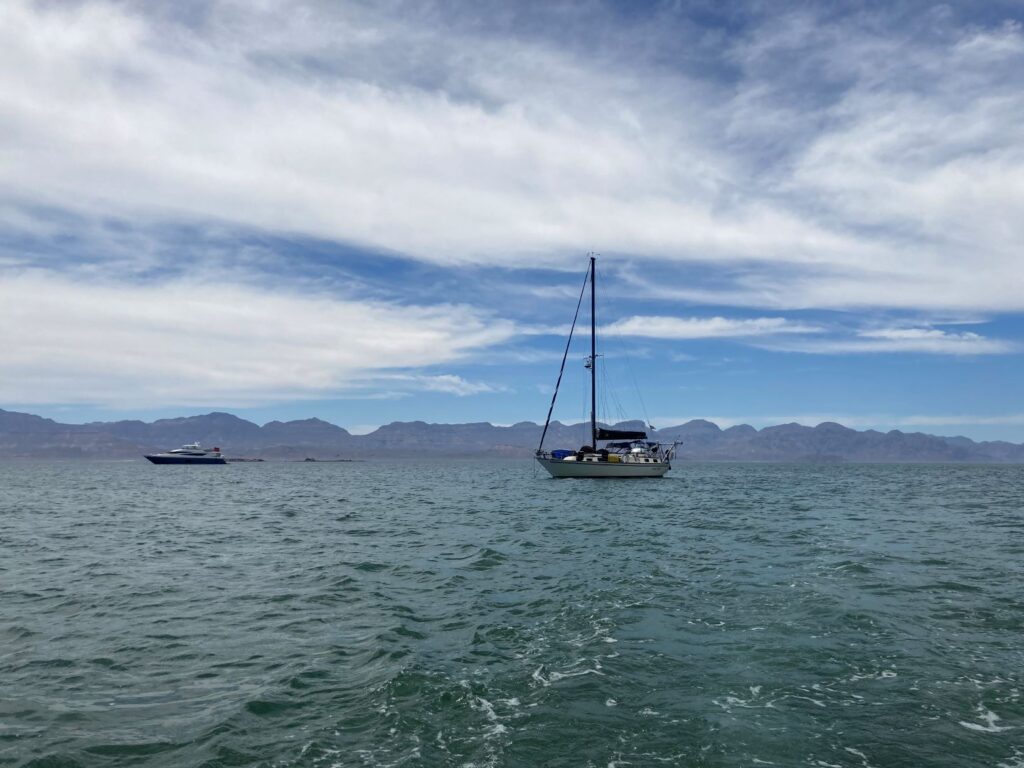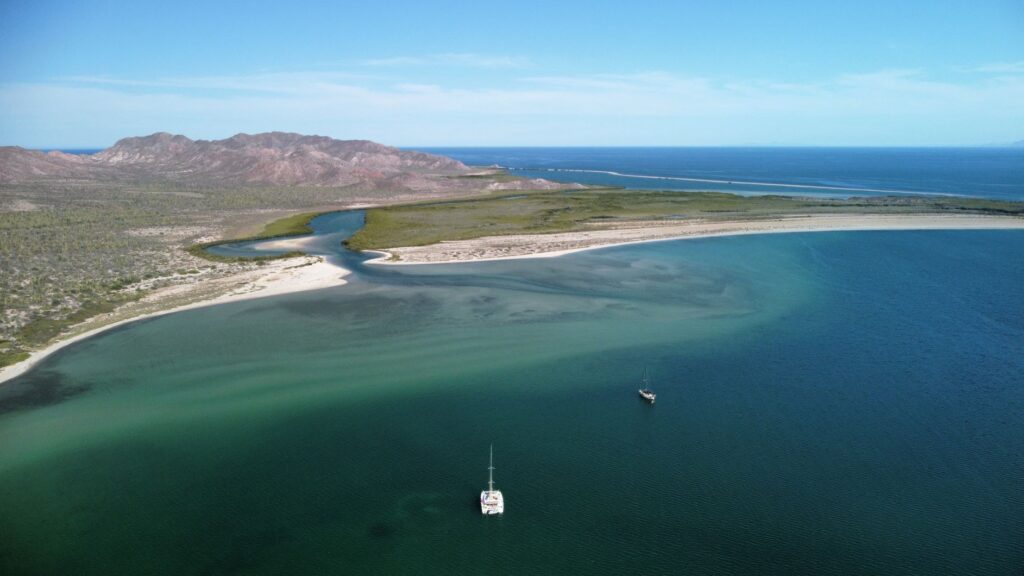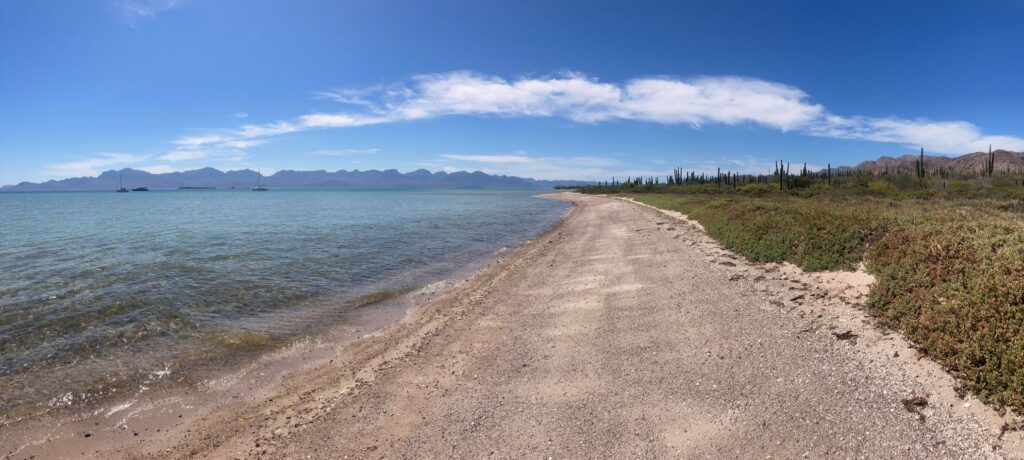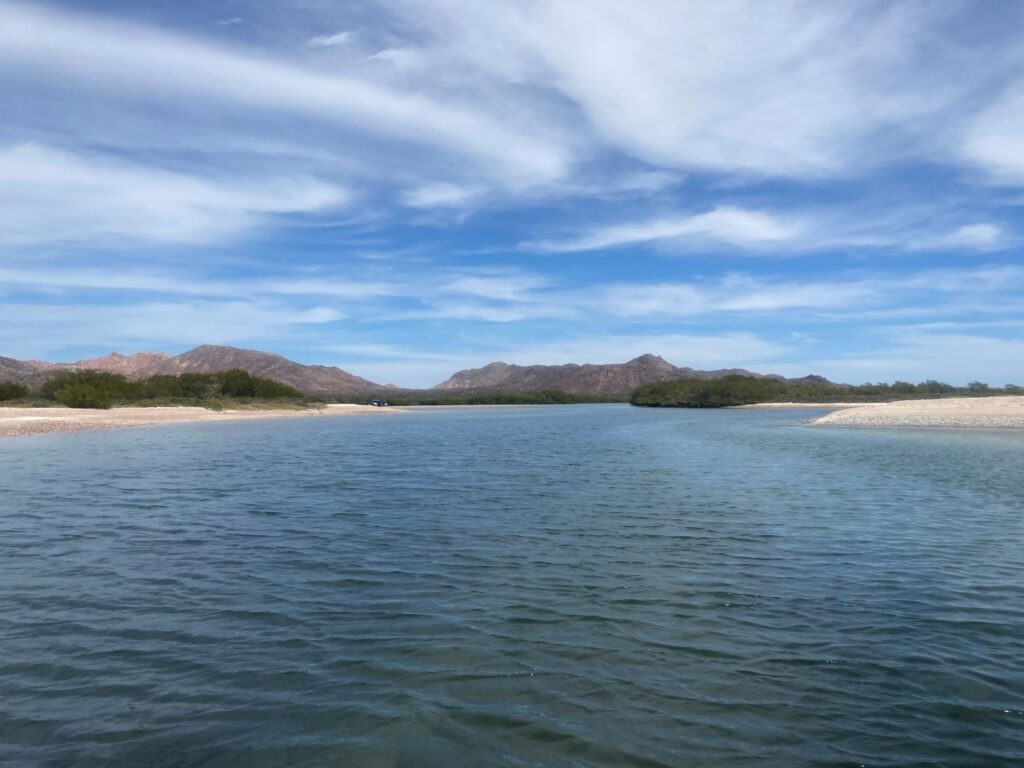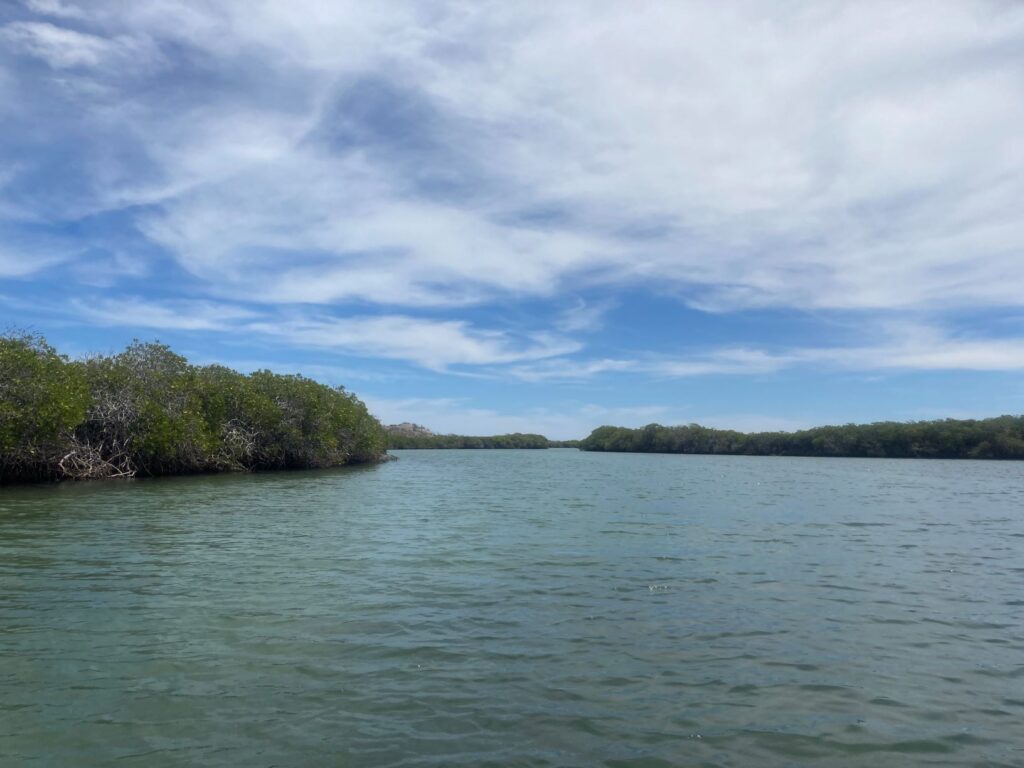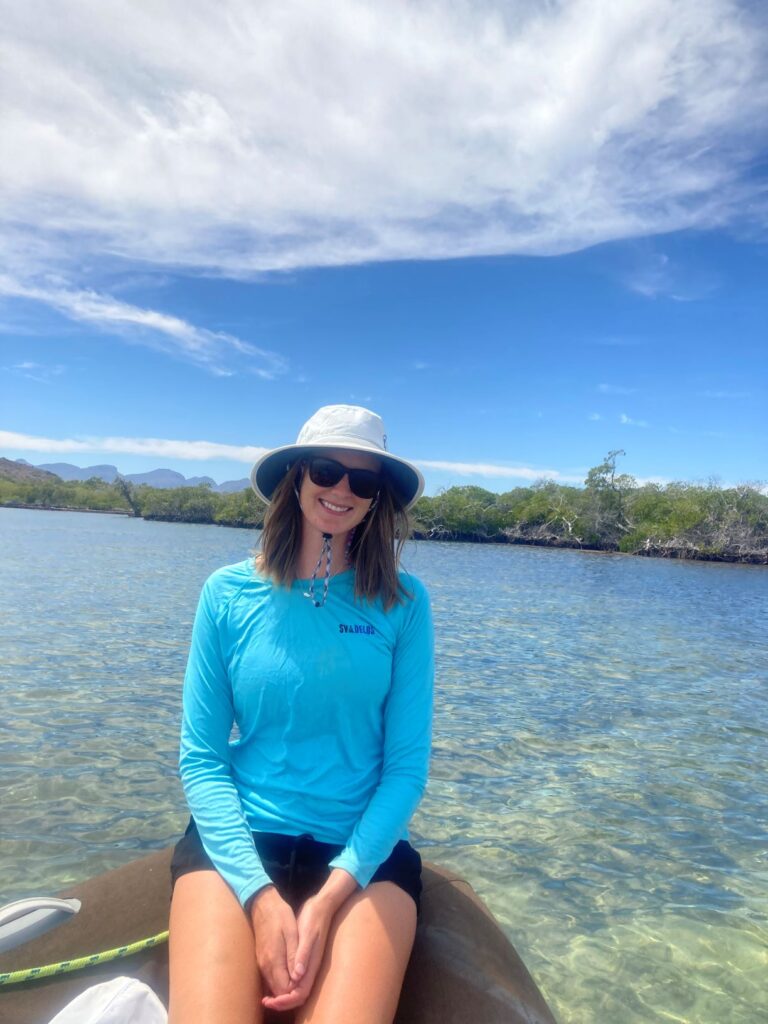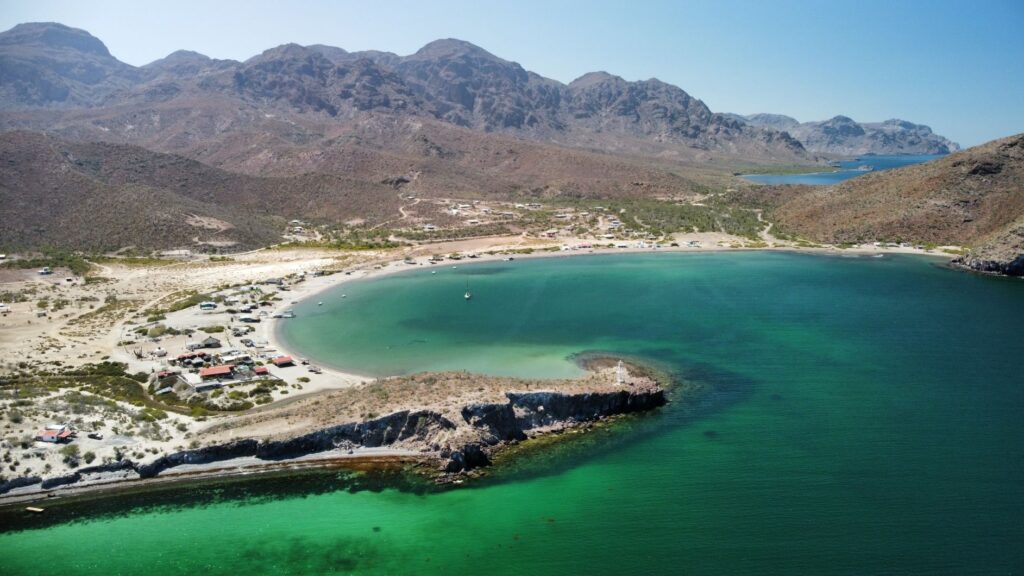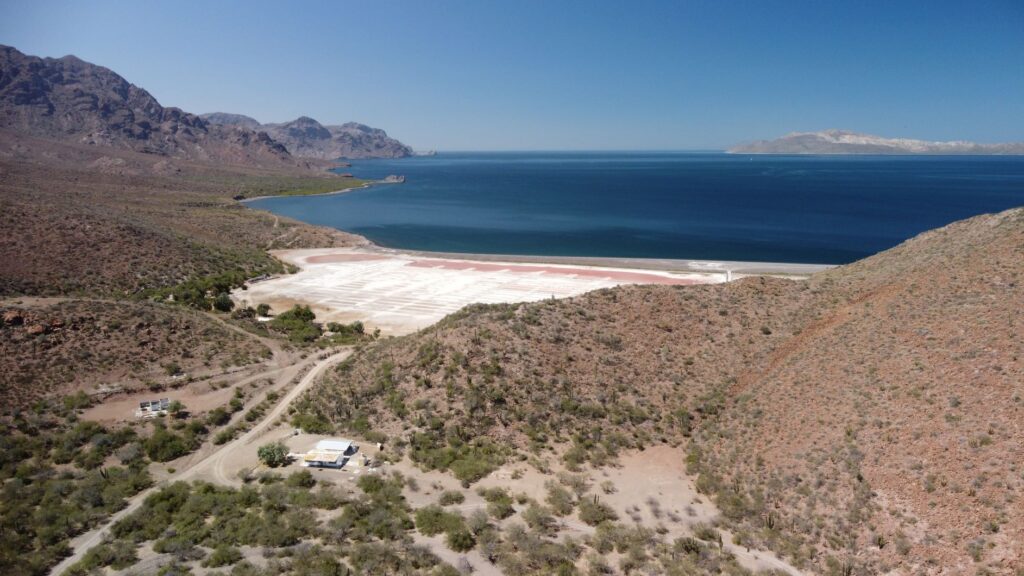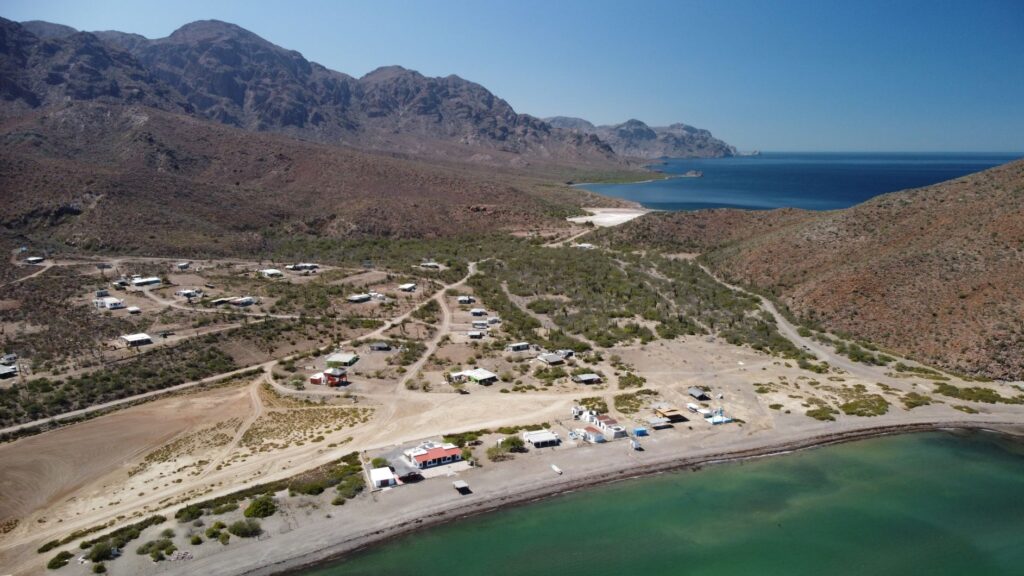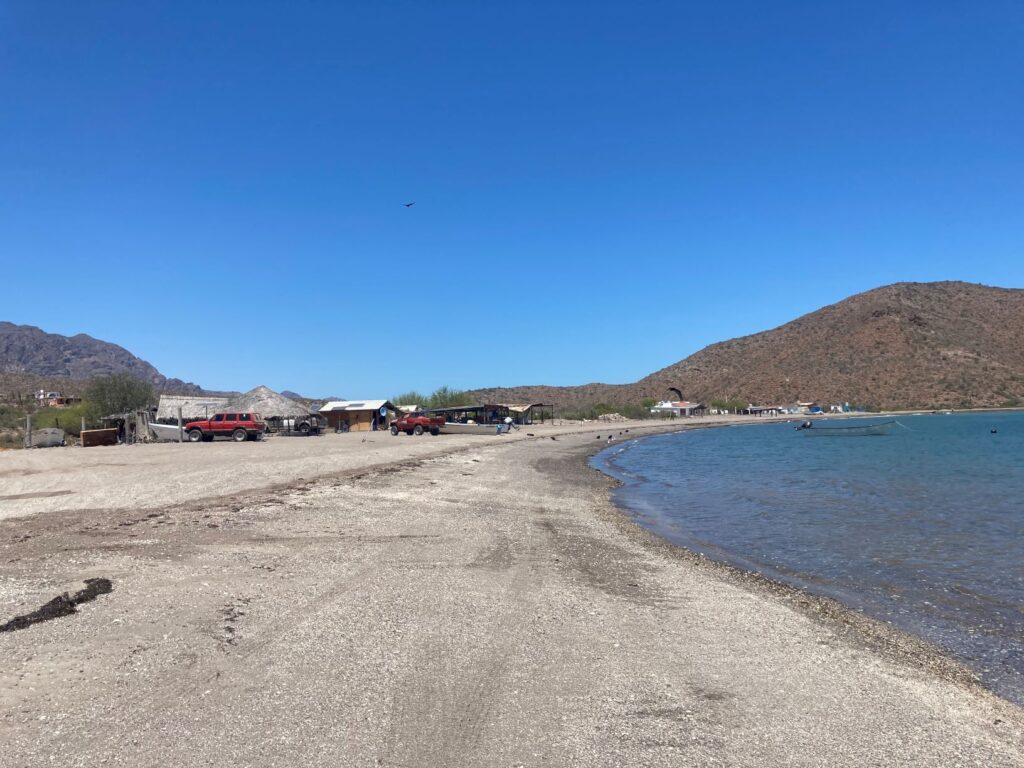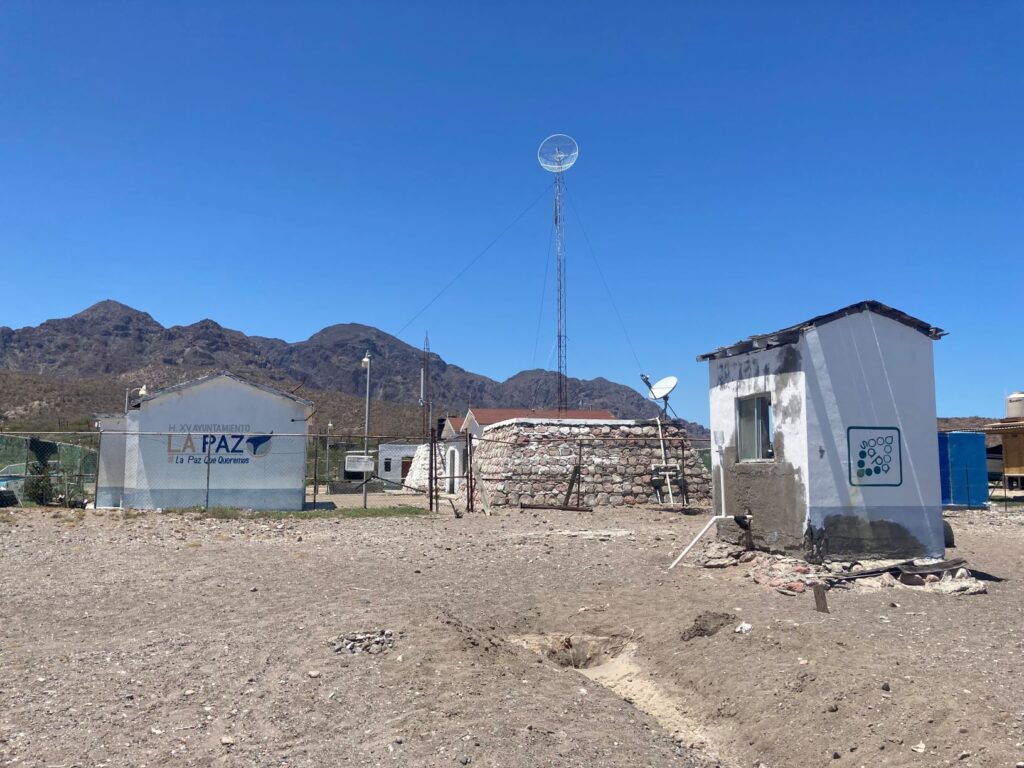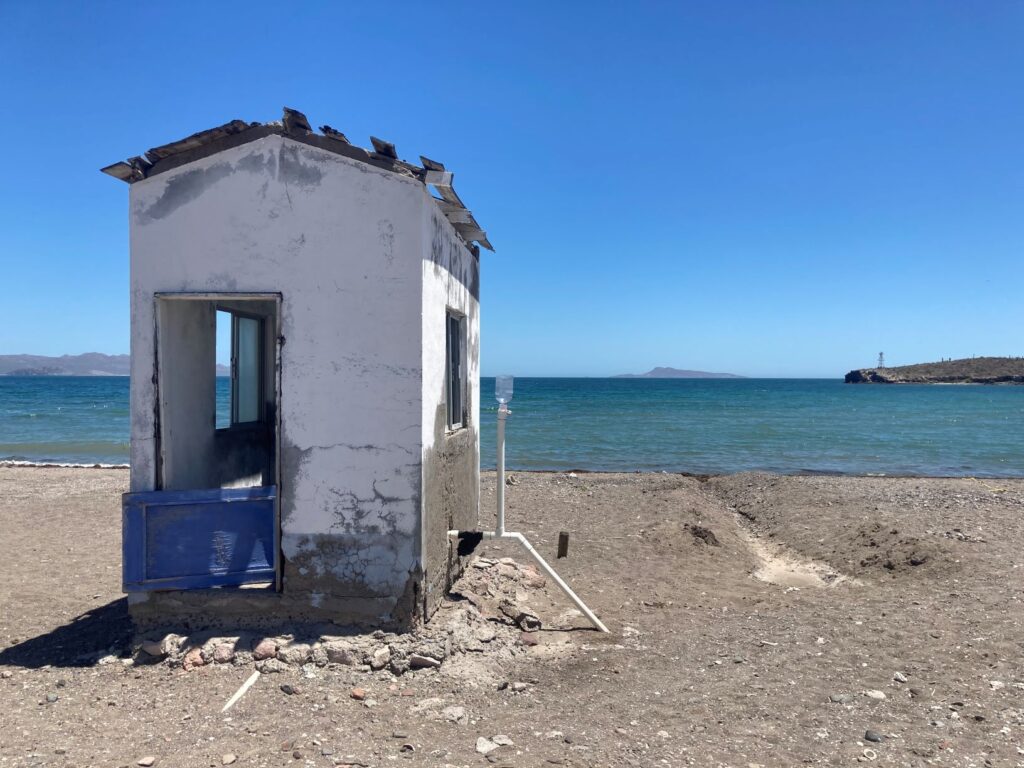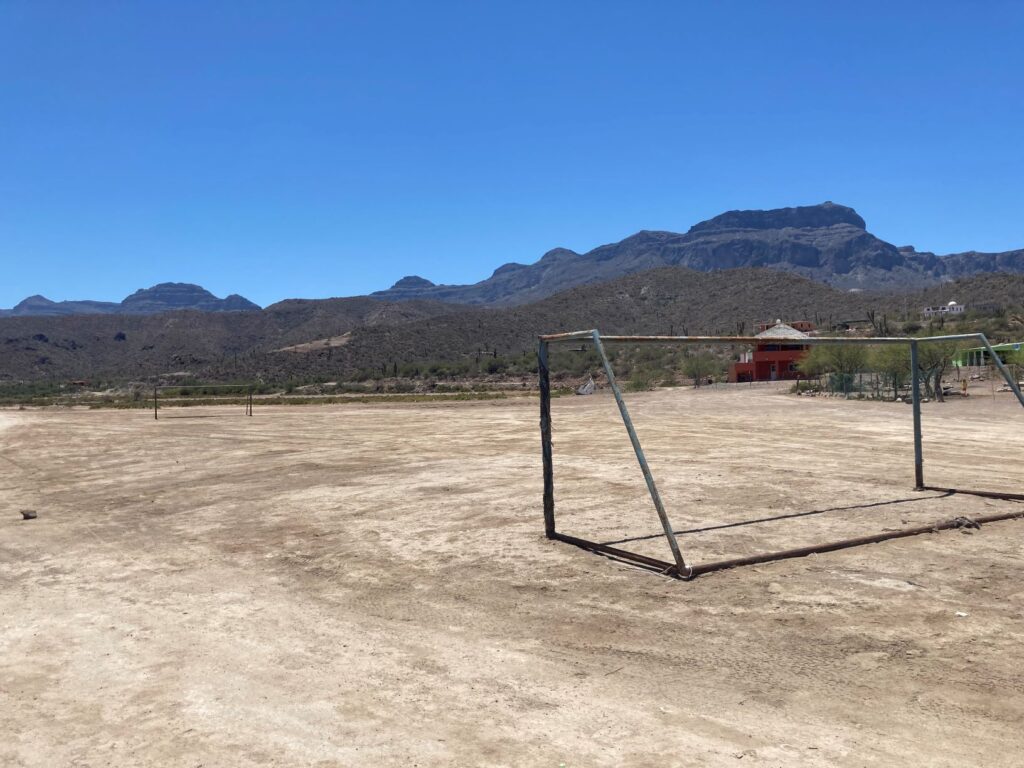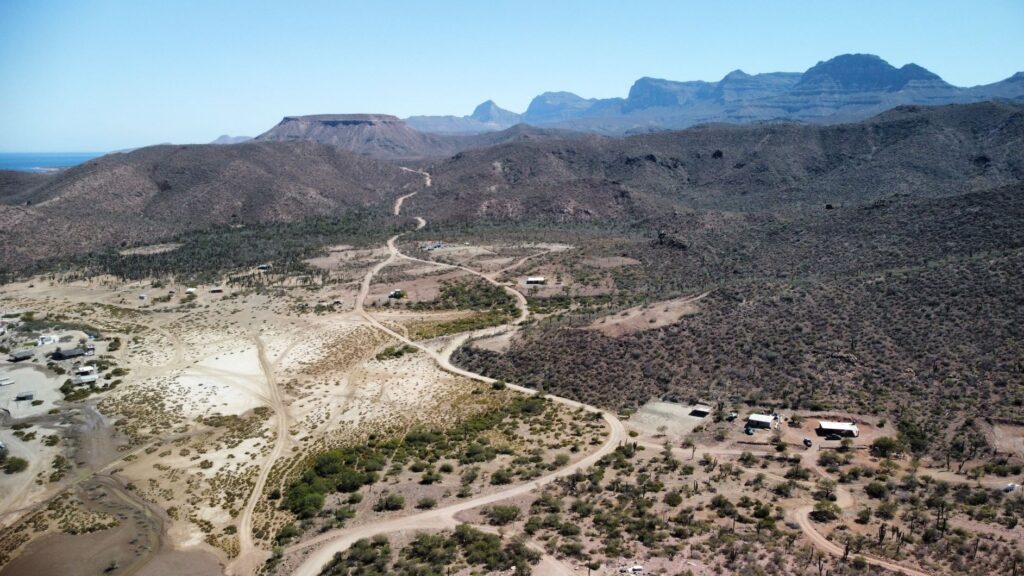After two nights at anchor in Isla Partida, we continued north to Isla San Jose. The island was stunning with more turquoise waters, mangrove estuaries, sandy shoals, and a thick cactus forest with dramatic hills for a backdrop. After checking the date, I realized it had officially been 6 months since my last day at work on October 16th, 2020. It’s already been a full half year! Where has the time gone? Looking back, I’m still not sure if the time passes faster at work, doing the fully-planned and scheduled day-to-day meetings, conference calls, reports, etc., or out here where the only constant is the fluidity of adapting to change without structure or deadlines. Either way, time files!
Eitan and I took the dinghy in to explore the mangroves, which we heard had good snorkeling. Despite the reviews, the water temperature was quite cold and the visibility wasn’t good enough to see anything exciting from the surface. After exploring the estuary, we went for a long walk on the beach to enjoy the scenery. The beach was filled with a lot of cool shells, some larger than my hands. There were also some remnants of a few bonfires on the beach so we began collecting firewood to make our own beach fire later that evening. We enjoyed the rest of the day at the beach and watched as the charter boats that had occupied the anchorage started departing one-by-one, leaving the bay all to ourselves.
An hour before sunset I began prepping the garlic bread and stuffed bell peppers to cook by the fire and Eitan headed to shore to get the fire pit going. Upon his return, he said to be sure to bring the bug spray, since bugs and mangroves tend to go hand in hand. We dinghied over to the shore and as we stepped foot on land were swarmed by little black biting bugs. At first, I thought we had just happened upon a swarm, but walking around we failed to lose them. Eitan and I sprayed ourselves with DEET, which didn’t seem to faze them. Before we could put our bags down, we hopped back in the dinghy and took off as fast as possible over the shallow sand bar. Once in deeper waters, we revved up the outboard to try and lose them, but unfortunately some still managed to make it back to SV Sierra Wind with us, leaving extremely itchy bites all over our bodies in the following days.
Although we loved our anchorage on Isla San Jose, it was not worth the potential of getting eaten alive again. We now understood why none of the other boats stayed in the anchorage overnight and we ran into some of them at our next stop of Santa Barista. Sant Barista was probably one of the smallest towns we had visited to date. We needed water and decided to head to shore to see where we could get our jerrycans filled. Surprisingly, there is a small desalination plant that supplies the locals. Displaying a sign on the gate, it said to call Tony Agua on Channel 16 for freshwater. We had certainly not been the first coming in to fill our water cans and Tony quickly answered on Channel 16. We said we needed 60 liters of water, and 10 minutes later someone showed up in a white pickup truck with jugs of water loaded in the back. With our limited broken Spanish, we learned that the town had a population of 100 people and the primary income was from fishing and salt production. Tony also recommended visiting the beautiful beaches in Mulege, about 60 miles to the north, but he had never been there and only seen pictures on a postcard from his nephew. It was crazy to think about spending your entire life in such a small place.
We spent a few more hours in town and were able to get very slow wifi at the local tienda as we tried to download the weather forecast for the following few days. There seemed to be a few more calm days in our future, perfect for our next anchorage, which one review described as “like Zion National Park, except you can park your boat there.”

